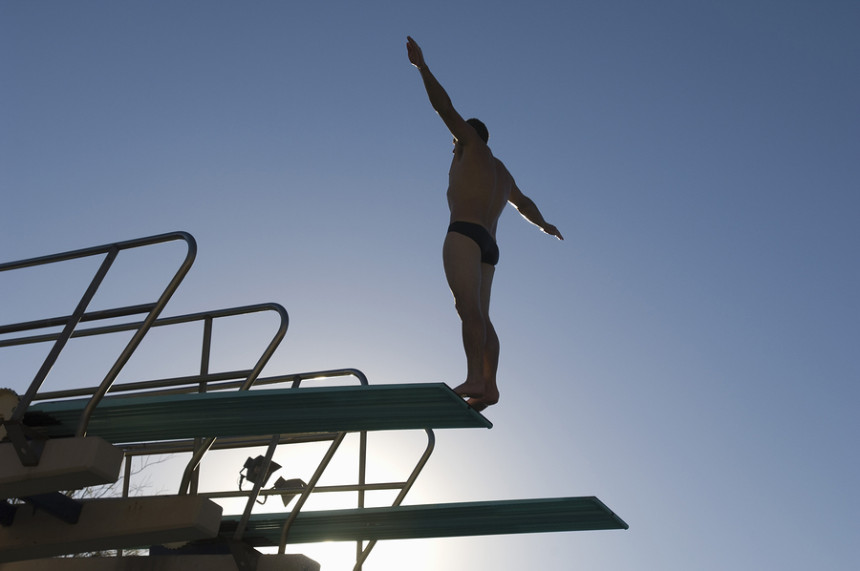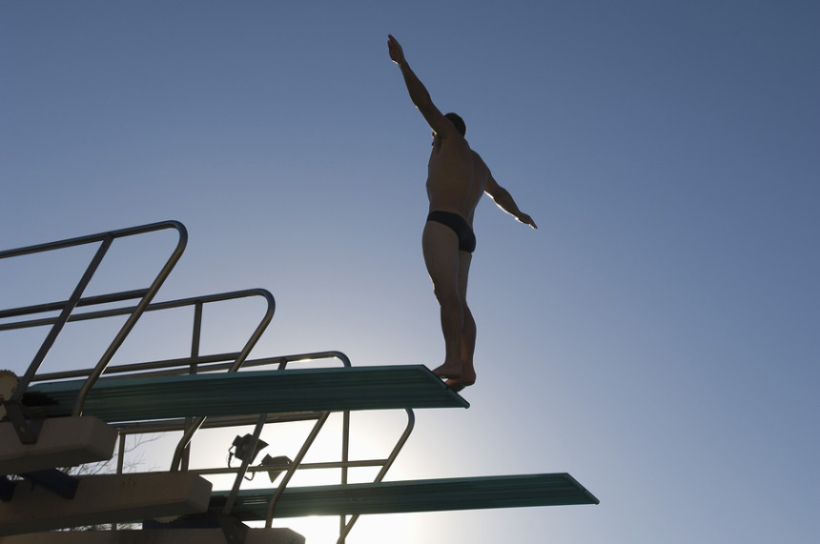
From kids enjoying Summer pool parties to Olympic athletes competing for the Gold, many of us out there are familiar with the joy, fun, and utility of the diving board, but how many know the science behind it? Diving boards generally operate off of one of the most fundamental relationships of elasticity…that is, the relationship between load and deflection. Most traditional springboard-type diving boards (as opposed to rigid diving platforms) are of the cantilever type. This simply means that the diving board consists of a beam (i.e. the board) that is supported or fixed (in many cases) on one side and unsupported or cantilevered on the other. When you (the diver) step or jump on the cantilevered end of the board, you apply a load to the board at your location on the board; this load will depend on your weight and acceleration towards the board (as affected by how high you jump up in the air before coming back down to the board). Because the board has a specific geometry (cross-sectional shape/area), overhanging length, and material (and therefore elastic modulus, or resistance to being deformed elastically/non-permanently), a stiffness can be defined that relates the applied load to the deflection of the beam. It is this stiffness that must be designed for by engineers. An engineer designing a diving board would combine the material selection, beam cross-sectional geometry, overhanging length, and a number of other operational parameters in order to optimize the board to produce a safe, fun, and ideal experience for the diver. Once this board has been designed, and you jump on it, you apply a load to the board of a certain stiffness, to produce a deflection; this deflection is stored in the board as what we call strain energy. Once the board has reached its lowest point, it will pause, in a state of static equilibrium, before the stored elastic potential strain energy, begins to release itself, converting into kinetic energy as the board moves upwards, relaxing its deflection, and sending you upwards with it. As you and the board travel upwards, you both continue to do so by way of your momentum that has been conveyed to you through your kinetic energy (the dynamic energy associated with your movement). You continue moving upwards into the air because of your momentum, until your kinetic energy dies out and becomes gravitational potential energy, which will provide the driving force to bring you back down and into the water. The board on the other hand, could only travel so far upwards before its stiffness prevented further deflection, bringing the board back down (this time not as far), then back up (not as far), and so on, and so on as the board oscillates in place until it becomes virtually still again.
To review:
your weight (…technically, your mass…) and acceleration towards the board produce a load that is applied to the board of stiffness, causing deflection of the board downwards, as elastic potential strain energy is stored in the board, until the system (you + the board) become stable, and the board begins to recover from its deflection, releasing its stored strain energy back into you as potential energy, granting a kinetic energy that confers a momentum to you, sending you up into the air, until your kinetic energy has become entirely gravitational potential energy, which then converts back to kinetic energy back down towards the water!
Simple enough, right? We won’t go into what happens when you hit the water…at least not this time…perhaps there’s an idea for a future post!

